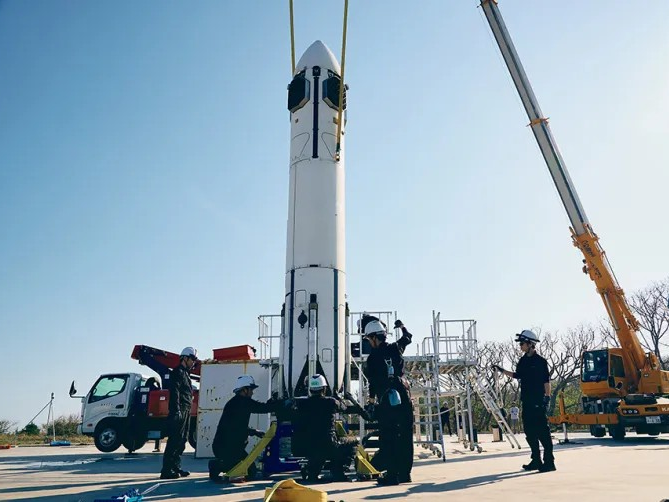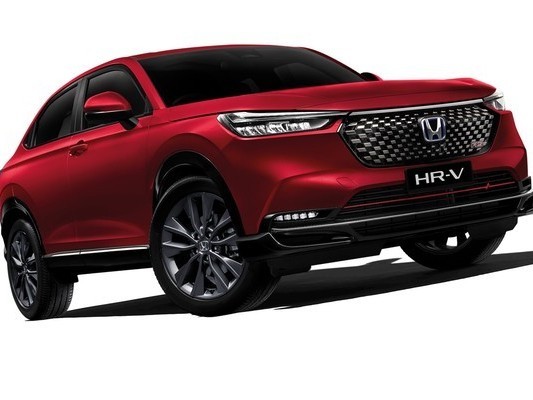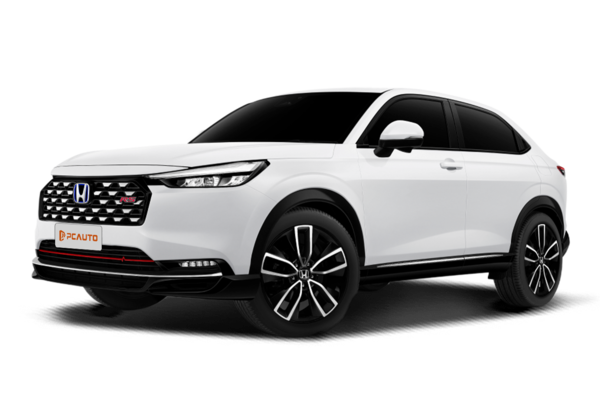Q
How long will a 2022 HR-V last?
The 2022 Honda HR-V, when properly maintained and driven sensibly under normal Malaysian conditions, should easily clock 200,000 to 300,000 kilometers or last upwards of 15 years. Its durability stems from Honda's tried-and-true 1.5L i-VTEC engine paired with Earth Dreams technology—proven over time to minimize mechanical wear and tear. Malaysia's hot, humid climate does put extra strain on vehicle longevity, though. I'd recommend paying special attention to inspecting the cooling system and rubber components like belts and bushings. A rust-proofing treatment every six months is also a smart move to combat that relentless humidity.
The real key to maximizing your HR-V's lifespan? Stick religiously to the maintenance schedule in the owner's manual. That means changing the engine oil and filter every 10,000 kilometers, and keeping a close eye on the CVT transmission fluid condition. Sure, rivals like the Toyota C-HR or Mazda CX-30 offer similar durability, but the HR-V holds an edge with its readily available local parts and generally lower maintenance costs—big wins for Malaysian car owners.
If you're planning to keep it for the long haul, splurging on an extended factory warranty plan and keeping meticulous service records will work wonders for preserving its resale value. One thing to note: if you opt for the hybrid e:HEV variant, you'll likely need to assess the battery around the 8-10 year mark. But with the conventional petrol model? No such battery-related concerns to worry about.
Special Disclaimer: This content is published by users and does not represent the views or position of PCauto.
Related Q&A
Q
What is the performance of the 2022 Honda HR-V like?
The 2022 Honda HR-V has really made waves in the Malaysian market. Under the hood, you've got that tried-and-true 1.5-liter i-VTEC engine, churning out 121 horsepower and 145 Nm of torque. Power delivery is smooth, and fuel efficiency is a strong suit too—perfect whether you're navigating city streets or hitting the highway for a longer trip.
Safety-wise, Honda didn't skimp. The HR-V comes loaded with the Honda Sensing suite, which includes adaptive cruise control, lane keep assist, and collision mitigation braking. These features add a whole extra layer of confidence behind the wheel.
Step inside, and the interior leans into simplicity and functionality—no unnecessary frills here. The 7-inch touchscreen infotainment system is straightforward to use, and with Apple CarPlay and Android Auto support, staying connected on the go is a breeze, just like modern drivers expect.
Size-wise, it's just right for most folks. The rear seats fold down nice and easy, freeing up a decent amount of cargo space when you need to haul stuff. Malaysian buyers really appreciate the HR-V's reputation for reliability and low maintenance costs—those are big ticks in the "pro" column.
Another thing that stands out is the suspension setup. It's tuned more for comfort, which works brilliantly on Malaysia's varied roads. Whether you're stuck in stop-and-go city traffic or rolling over some bumpy backroads, the HR-V handles it all without breaking a sweat.
If you're in the market for a compact SUV that's practical, fuel-efficient, and safe, the 2022 Honda HR-V is definitely worth a spot on your shortlist. All things considered, it's a solid all-rounder that holds its own against the competition in its class.
Q
Is the 2022 Honda HR-V good in snow?
The 2022 Honda HR-V puts in a solid if unspectacular performance in snowy conditions. The front-wheel drive variant handles light snow-covered roads adequately, but when faced with deeper snow or icy surfaces, opting for the version equipped with the real-time all-wheel drive system is advisable to boost traction. This AWD setup automatically distributes torque between the front and rear wheels, enhancing stability on slippery surfaces. That said, compared to dedicated off-roaders or full-time AWD vehicles, the HR-V's snow capabilities still lean more towards urban driving needs.
For our Malaysian readers, while local weather means snow driving isn't a concern, similar principles apply to wet road conditions during the monsoon season. The HR-V's Vehicle Stability Assist (VSA) and Hill Start Assist functions prove handy in heavy rain, offering that extra layer of safety. If you're planning a road trip to colder climes, swapping to winter tires and packing snow chains is a smart move. Also, keep in mind the HR-V's ground clearance (around 180mm) might be a limiting factor in deep snow.
On a side note, Honda's G-CON safety body structure does a good job of dispersing impact forces if you happen to lose control on slippery surfaces – a feature that's equally useful in Malaysia's rainy environment.
Q
Is the Honda HR-V a smooth ride?
The Honda HR-V has built a solid following among Malaysian car buyers, and it's easy to see why—this crossover nails that smooth, hassle-free driving feel so many folks here love. A big part of that appeal comes down to Honda's thoughtful suspension tuning and powertrain setup.
The suspension does a commendable job ironing out those typical Malaysian road annoyances—think potholes, uneven tarmac, and speed bumps—all handled with a plushness that keeps the ride easygoing. Cabin noise levels are also above average for the class, which definitely adds to the overall comfort factor. Another highlight? The seats are ergonomically designed, so even on longer drives, you won't find yourself shifting around trying to get comfortable. That makes it a solid pick for family-oriented drivers who prioritize a relaxed commute.
Steering feel is on the lighter side too, which is a godsend when navigating Malaysia's often congested city streets—maneuvering into tight spots or weaving through traffic feels like a breeze. Now, if you're someone who spends a lot of time bombing down the highway, you might notice the chassis feels a touch soft when cruising at higher speeds, but honestly, it's a minor trade-off for how comfortable the rest of the package is.
Of course, it's not the only player in the game—rivals like the Toyota Corolla Cross offer similar vibes. As always, the best move is to head to a dealership, take 'em both for a spin, and see which one gels better with your daily grind. At the end of the day, the HR-V's got a lot going for it if smooth, easy comfort is your top priority.
Q
Is the Honda HR-V a woman car?
The Honda HR-V isn't some "girl's car" – it's a compact SUV that works for just about anyone, and it's absolutely killing it in Malaysia. Why? Think flexible interior space, solid reliability, and great fuel economy – the kind of stuff that matters to real people. It's got that sleek, sporty look outside, and inside, it's practical with just the right tech touches. Honestly, whether you're a guy or gal, there's a trim and style that'll click.
Lots of Malaysian families and young professionals are grabbing HR-Vs because they're the ultimate multitaskers. Perfect for weekday commutes, but still roomy enough for weekend getaways. Utility? It's got that in spades. And let's not forget safety – the Honda SENSING suite is a big plus, adding even more appeal.
Here's the thing: when picking a car, it's all about your needs and what you like, not some outdated gender box. The HR-V's whole vibe is versatility, which is why it fits so many lifestyles. If you're curious, do yourself a favor – head to a dealership, take it for a spin, and see if it gels with how you drive and live. That's the real test.
Q
What is the seating capacity of the 2022 Honda HR-V?
The 2022 Honda HR-V in Malaysia offers seating for 5 people, with the standard 2+3 layout – individual seats up front for the driver and passenger, and a three-person bench in the rear. It's a solid setup for family runabouts or trips with friends. As a B-Segment SUV, the HR-V's seats strike a good balance between comfort and practicality. The rear seats split 60:40 and fold down, expanding the boot space to a claimed 1,002 liters for when you need to haul more gear. Despite its compact footprint, the 2,610mm wheelbase translates to decent legroom for the class. Now, Honda's nifty Magic Seat feature isn't standard across all trims, but you might still find it on higher-spec models. If that's a must-have, I'd recommend hitting up Honda Malaysia's website or popping into a dealership to verify the exact kit on each variant. And hey, it never hurts to cross-shop – compare its space with rivals like the Proton X50 or Toyota Corolla Cross to see which one best fits your needs.
Q
Is the HR-V 2022 reliable?
The 2022 Honda HR-V has proven itself to be a solidly reliable choice in the Malaysian market. This HR-V carries forward Honda's reputation for durability. The suspension setup strikes a nice balance between comfort and stability, making it a great fit for both daily city commutes and family drives. And let's not forget fuel efficiency – it does pretty well there too, aligning perfectly with what Malaysian buyers look for in terms of practicality.
A quick heads-up if you're eyeing a used one: make sure to dig into the CVT gearbox service history. Check if the transmission fluid was changed regularly – that's a biggie for keeping it running smoothly down the line.
On top of all that, the HR-V holds its value pretty well in Malaysia, sitting comfortably in the upper-middle range for resale prices among its peers. That's a good indicator that the market trusts its reliability.
So, if you're a Malaysian buyer who prioritizes practicality and doesn't want to break the bank on upkeep, the 2022 HR-V is definitely worth a spot on your shortlist. Just remember, as with any used car, always inspect the actual vehicle and go through the service records thoroughly before making a call.
Q
What is the life expectancy of a Honda HR-V 2022?
The 2022 Honda HR-V typically enjoys a solid lifespan of 15 to 20 years or over 250,000 kilometers on Malaysian roads, though this really hinges on how well the owner maintains it and the conditions it's driven in. Keeping up with regular oil changes, transmission fluid swaps, brake fluid replacements, and sticking to the official service schedule are absolute musts if you want to keep this SUV going strong for the long haul. Malaysia's hot and humid climate can be tough on rubber components and electronics, so I'd pay extra attention to checking the air conditioning system and undercarriage parts regularly.
The HR-V's 1.8L i-VTEC engine and CVT transmission are pretty tried-and-tested tech – with proper care, they're known for being reliable workhorses. Compared to other SUVs in its class, the HR-V holds its value well on the used car market here, which tells you something about how Malaysian drivers trust its long-term durability. A quick heads-up though: always stick with genuine or manufacturer-approved parts, and skip the dodgy mods if you don't want to cut the vehicle's lifespan short. Also, given our tropical weather, a full inspection every six months is a smart move to catch any climate-related issues early.
Q
How to check oil on 2022 Honda HRV?
To check the engine oil level in a 2022 Honda HR-V, first make sure the vehicle is parked on level ground and turned off for about 5 minutes to let the oil drain back into the pan. Then pop the hood and locate the orange or yellow oil dipstick handle. Pull it out, wipe it clean with a cloth, reinsert it fully, and pull it out again. Check where the oil level sits—it should be between the "MIN" and "MAX" marks on the dipstick. If it’s below "MIN," top it up with the oil grade specified in your owner’s manual right away.
I recommend checking it once a month or before long drives. Also, keep an eye on the oil color—if it’s blackened or has gritty particles, it’s time for an oil change. Sticking to regular maintenance will definitely help your engine last longer. Here in Malaysia’s hot climate, go for a higher viscosity oil to make sure it maintains proper lubrication. Always follow Honda’s official service intervals too. If you notice the oil is burning faster than usual or the oil warning light pops up on the dash, head to an authorized service center ASAP. You don’t want to risk engine wear from the heat or extended driving without enough proper lubrication.
Q
What kind of oil does a 2022 Honda HR-V take?
For the 2022 Honda HR-V in the Malaysian market, the recommended engine oil viscosity is 0W-20. This should be a full synthetic oil that meets Honda Genuine Motor Oil standards, ensuring optimal lubrication and heat dissipation for the engine in tropical climates. Honda suggests changing the oil every 10,000 kilometers or 6 months, whichever comes first. If you're driving under severe conditions – think lots of short trips or prolonged high-load running – you might want to shorten that interval to 5,000 kilometers.
When picking your oil, keep an eye out for the API SN/SP or ILSAC GF-6 certifications. These oils come with more advanced cleaning additives that do a solid job of preventing carbon buildup. Now, while a 5W-30 oil might offer slightly better high-temperature protection, it can also lead to a small increase in fuel consumption. Unless your HR-V has clocked over 100,000 kilometers or is experiencing excessive oil consumption, it's best not to deviate from the factory-specified viscosity.
When buying engine oil in Malaysia, it's advisable to go through authorized dealerships to guarantee you're getting the genuine product – steer clear of来路不明 (l来路不明 - lài lù bù míng - literally "source unknown" / unbranded/questionable origin) oils. Also, make it a habit to check your oil level regularly and keep it between the minimum and maximum marks to help ensure your engine's longevity.
Q
Does 2022 HR-V have CVT transmission?
Yep, the 2022 Honda HR-V does come with a CVT (Continuously Variable Transmission) here in the Malaysian market. This gearbox is known for its smooth, seamless shifts and solid fuel efficiency, making it a great fit for city driving. CVT tech works by constantly adjusting the gear ratios to keep the engine running at its most efficient, which translates to better fuel economy compared to traditional automatics, along with a more linear acceleration feel. Around Malaysia, a lot of drivers really appreciate CVTs because they handle our stop-start traffic so well. It's not just the HR-V either – Honda's other popular models like the City and CR-V also use similar CVT setups, showing Honda's ongoing focus on boosting driving comfort and eco-friendly performance. If you're a Malaysian considering the 2022 HR-V, that CVT is definitely a standout feature. It's perfect for daily commutes, and over time, it'll help you save some cash at the pump too.
Latest Q&A
Q
How many miles per gallon does the Dodge Charger achieve?
The Dodge Charger's fuel economy varies depending on the specific trim and engine setup. Take the rear-wheel-drive model with the 3.6L V6, for example—it'll sip around 19-23 MPG in the city and stretch to 30-31 MPG on the highway. Step up to the high-performance 6.4L V8 HEMI, and you're looking at roughly 15-17 MPG in urban driving and 24-25 MPG out on the open road. If you opt for the even more beastly 6.2L supercharged V8 in the Charger SRT Hellcat, city fuel economy drops to about 12-13 MPG, with highway figures coming in at 21-22 MPG.
For our readers in Malaysia, keep in mind these numbers are based on U.S. EPA testing standards. Real-world fuel efficiency can vary depending on your driving style, road conditions, and fuel quality. Since Malaysia uses the metric system, you can convert these MPG figures to liters per 100 kilometers for easier reference (1 MPG ≈ 0.425 km/L).
Also, hybrid or future electric versions could offer better efficiency down the line. Before making a purchase, it's smart to check local specifications and tax policies—big-displacement engines might mean higher road taxes in Malaysia. And don't forget, regular maintenance and keeping your tires properly inflated can also help optimize fuel economy.
Q
When was Dodge Charger released?
The Dodge Charger first hit the scene back in 1966, and man, did it make a statement. As a classic American muscle car, it quickly became the poster child for power and style. That first-gen model packed some serious V8 heat, like the legendary 7.0-liter Hemi, setting the bar high for what a high-performance ride should be.
Over in Malaysia, you don't see Chargers cruising around every day—they're pretty rare birds. But when you do spot one, heads turn. Its bold, in-your-face design and brute force under the hood still hook a solid group of local gearheads.
Through the years, the Charger's gone through some major evolutions. The latest model? It's like they took that classic muscle soul and injected it with 21st-century tech. We're talking advanced driver-assistance systems, more efficient powertrains—think 3.6L V6 and 5.7L V8 options—and then there's the beastly Hellcat trim, rocking a 6.2L supercharged V8 that cranks out over 700 horsepower. Insane, right?
For Malaysian car fans, the Charger isn't just a car—it's a symbol of that wild, unapologetic American muscle spirit. Yeah, the local market's mostly dominated by Japanese and European rides, but you'll catch the occasional imported Charger rolling around, especially in enthusiast circles. Whether it's a vintage classic or a modern rocket ship, the Charger's history and raw performance have cemented its spot as an icon in car culture. And let's be real—either way, it's all about that pure, unfiltered American driving thrill.
Q
What is the sport traction control of the Dodge Charger?
In the Dodge Charger, Traction Control Sport is an electronic stability feature engineered specifically to amp up the driving fun. It dials back the traction control intervention when you're pushing the car hard, letting the rear wheels break loose a little in a controlled way. This helps you get more agile turn-in or even a little power slide, all while still keeping that baseline safety net in place.
You’ll usually find a button on the center console to kick it on. It’s right at home on a track or closed course, but for your daily grind on the streets, sticking with the default mode is the smart call for safety. Now, for our friends in Malaysia, those wet, rainy roads can up the ante on wheel spin, so definitely use this feature with a bit of extra caution.
Here’s the lowdown on how it works: sensors keep an eye on wheel speed differences, and if things start to get sketchy, the system automatically tweaks engine power or hits the brakes to keep you from losing control. Different brands slap different names on similar setups—like ESC Sport or VDC Off—but they’re all chasing that same sweet spot between safety and raw handling.
If you’re hungry to dive deeper into car electronics, check out stuff like electronic limited-slip differentials or torque vectoring. They’re all part of the tech package that makes modern performance cars handle as good as they do.
Q
How many miles can Dodge Charger travel?
For Malaysian consumers wondering about the Dodge Charger's durability, this American muscle car typically clocks in 320,000 to 480,000 kilometers over its lifespan—mileage that really hinges on how well you maintain it and your driving habits. With Malaysia's hot and rainy climate, make sure to pay extra attention to regular checks on the cooling system and rubber components. Stick to the manufacturer's recommended service interval of 5,000 to 7,500 miles (around 8,000 to 12,000 km), and using full synthetic oil will definitely help extend the engine's life. The Charger's Hemi V8 is known for being tough as nails, but stop-and-go city traffic can wear out the clutch faster. So, if you're regularly driving in congested areas like KL, consider shortening the gearbox oil change interval a bit. It's worth noting that the right-hand-drive version in Malaysia shares basically the same mechanicals as left-hand-drive models, and parts supply is solid through authorized dealers, keeping long-term ownership costs manageable. If you're eyeing a used model, focus on checking the electronics in post-2015 cars—their Uconnect infotainment systems can get laggy if not maintained, but that doesn't hurt the overall mechanical reliability of the car.
Q
How to install the cold air intake on Dodge Charger?
Installing a cold air intake system on your Dodge Charger is a solid mod that can boost both engine performance and fuel efficiency. First off, you’ll need to grab the right cold air intake kit—make sure it’s compatible with your Charger’s engine model. Here in Malaysia’s hot climate, go for intake tubes made from heat-resistant materials like aluminum alloy or high-density plastic; they’ll hold up better over time. The installation steps involve yanking out the stock air filter box, disconnecting the sensor plugs, fitting the new intake piping and high-flow air filter, and making sure all connections are sealed tight to keep unfiltered air out of the engine. Once it’s all set up, check if the check engine light comes on—if it does, you might need an OBD2 scanner to reset the ECU so it adjusts to the new air intake volume.
Basically, a cold air intake works by lowering the temperature of the incoming air, which increases oxygen density and improves combustion efficiency. But heads up: during Malaysia’s rainy season, you’ll want to add a waterproof shield to prevent the engine from sucking in water. Also, keep in mind that mods like this could affect your factory warranty, so it’s smart to check with an authorized service center before diving in. If you’re chasing even better results, pairing it with an exhaust system upgrade can help, but make sure everything stays within JPJ’s noise and emissions regulations.
View MoreRelated News

Success! Honda Type R Rocket Test Paves Way for 2029 Space Mission
Kevin WongJun 24, 2025

Honda HR-V : Save Money When Buying Your Vehicle!
WilliamApr 8, 2025

Honda HR-V minor redesign launched in Thailand: More dynamic appearance, smarter interior upgrades!
WilliamNov 12, 2024

2024 Honda HR-V will be launched in Thailand in November, with an estimated price of RM 113,000.
JamesOct 8, 2024

Honda Civic/City/HR-V/DR-V/CR-V, September car purchase discounts: multiple models reduced price!
JohnSep 5, 2024
View More













 Cars
Cars




Pros
Cons